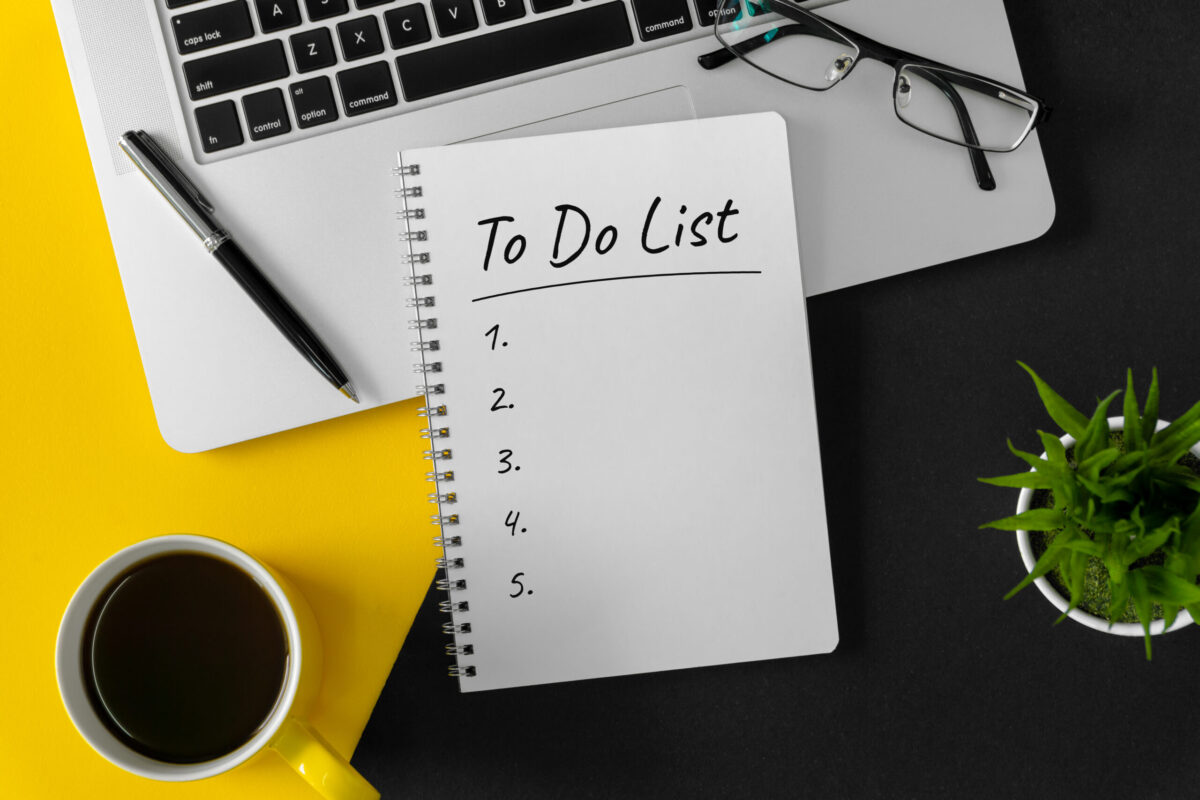Do you feel lost without a list? If so, you’re in the majority — 63% of professionals swear by to-do lists. They provide structure, decrease anxiety and foster a sense of productivity by allowing you to see we’ve accomplished at the end of a day.
For some, however, to-do lists increase stress instead of lessening it. Tasks pile up, you feel overextended and it becomes so overwhelming that nothing gets done. If that sounds familiar, there are ways to structure a to-do list so it’s a help and not a hindrance.
Using a to-do lists to your advantage
“When many of us are working from home, it’s important to break up our days so we can stay fresh, mentally and physically,” says Laura Bertrand, licensed professional counselor and mental health expert at BlueCross BlueShield of Tennessee. “To-do lists can help because they allow you to structure small, productive activities in between big projects.
“For example, after you get off a long Zoom call or finish a report, take a 15-minute walk, fold laundry or do some meal prep for dinner. Incorporating small tasks into your day increases serotonin, gets your blood pumping and helps you feel more satisfied at the end of the day.”
5 ways to make to-do lists work for you
1. Be small and specific.
If you have family, pets and work to do, “Repaint the house” is an intimidating task; “Tape off the den,” on the other hand, is far more doable. Break down big projects into bite-sized tasks, and space them out over a week or a month. The more manageable each piece is, the more likely it is to get done.
2. Do the hardest things first.
Is there one task on your to-do list that you’re dreading? Do it first. Studies show that the first part of the day is when our self-control is strongest. If you leave the tough tasks for later, you’re likely to end up avoiding it.
3. Think in 15 minutes intervals.
How much can you get done in 15 minutes? Probably more than you think. While most people default to 30 minutes for a meeting or call, that’s probably longer than you need. Many successful business people are known for conducting meetings in as little as 5 minutes. Make an agenda — a bulleted list will do — keep your goals simple, and share it in advance. Starting with everyone on the same page is more likely to result in success.
4. Schedule specific times for calls, meetings, emails & social media.
While it’s not possible for every job, try to establish blocks of time for meetings and calls. Ask your colleagues to schedule calls only on Tuesday and Thursday mornings, for example, so the rest of your day is freed up for projects that take more time and brain power.
The same goes for emails and social posts. Start with 3 times a day — try first thing in the morning, after lunch, and one hour before close of business. Tell your coworkers your plan, and try it for a week. You may find you can handle your responsibilities faster when you’re not constantly focused on your inbox or social media feed.
5. Mix in chores, hobbies and activities.
One of the best things about working from home is that you can add variety to your day in wonderful ways. Walk the dog in between — or even during — a conference call, kick the soccer ball around with your kids before your next meeting, or mow the lawn before you jump back into that complex spreadsheet. Incorporating activity into your routine will leave you refreshed, mentally and physically, and it will help you feel accomplished in both your work and home life at the end of the day.
“In my own experience, a to-do list is an ever-changing document that can have things added or taken off as needed, and there’s a Hank Green quote I always think about when it comes to getting things done,” says Bertrand. “It says: ‘You will always struggle with not feeling productive until you accept that your own joy can be something you produce. It is not the only thing you will make, nor should it be, but it is something valuable and beautiful.’”
Get more information about specific health terms, topics and conditions to better manage your health on bcbst.com. BlueCross BlueShield of Tennessee members can access wellness-related discounts on fitness products, gym memberships, healthy eating and more through Blue365®. BCBST members can also find tools and resources to help improve health and well-being by logging into BlueAccess and going to the Managing Your Health tab.


